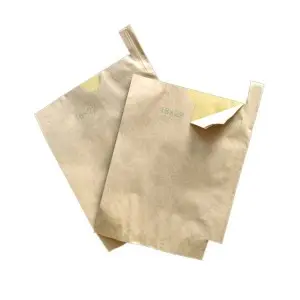Dec . 09, 2024 17:57 Back to list
kiwi pollen collection equipment pricelist
A Comprehensive Guide to Kiwi Pollen Collection Equipment Pricelist Overview
Kiwifruit, known for its vibrant flavor and nutritional benefits, has become increasingly popular among both home growers and commercial farmers. One key aspect of successful kiwi cultivation is effective pollination, which significantly impacts fruit quality and yield. As a result, investing in proper pollen collection equipment is essential for maximizing production. This article provides an overview of kiwi pollen collection equipment, including a general pricelist and factors to consider when making a purchase.
Why Pollen Collection is Important
Pollination is a critical process in the cultivation of kiwifruit. Kiwis are dioecious plants, meaning that male and female flowers grow on separate plants. For fruit production, it is crucial to ensure that female flowers are adequately pollinated by pollen from male flowers. However, due to various environmental factors, natural pollination may not always be reliable. This is where pollen collection and application equipment come into play.
Using pollen collection equipment allows growers to harvest and store pollen efficiently, ensuring that it can be applied when conditions are most favorable for pollination. This proactive approach can lead to better fruit set and higher yields.
Types of Pollen Collection Equipment
There are several types of pollen collection equipment available in the market, each designed to cater to different needs and preferences
1. Handheld Pollen Collectors These simple devices are ideal for small-scale growers or hobbyists. They allow for the manual collection of pollen from male flowers. Prices for handheld collectors typically range from $20 to $50.
2. Vacuum Pollen Collectors Designed for efficiency, vacuum collectors use suction to gather pollen from multiple flowers quickly, making them suitable for larger farms. Prices for vacuum pollen collectors can range from $200 to $500, depending on the size and functionality.
3. Mechanical Pollen Collectors These machines work by gently shaking the flowers to release pollen and then collecting it automatically. Mechanical options are more expensive, often between $1,000 and $3,000, but they significantly increase productivity.
4. Pollen Storage Containers Once collected, pollen must be stored properly to maintain its viability. Specialized containers, often equipped with temperature and humidity controls, are available and generally cost between $50 and $200.
kiwi pollen collection equipment pricelist

5. Pollen Applicators To effectively apply collected pollen, growers can invest in applicators. These may range from simple handheld devices to more complex machines. Prices can start from $30 for basic models and go up to $1,500 for sophisticated applicators.
Factors to Consider
When selecting pollen collection equipment, several factors should be taken into account
- Scale of Operation Consider the size of the farm. Hobbyists may be well-served by handheld devices, while commercial growers might require industrial-grade machinery for efficiency.
- Budget Equipment prices can vary widely, so it’s essential to establish a budget before shopping. Consider the long-term benefits of investing in higher-quality equipment that may offer better durability and efficiency.
- Ease of Use Especially for mechanical and vacuum collectors, ease of operation and maintenance should be a priority. Opt for equipment that requires minimal setup and can be used comfortably.
- Additional Features Look for equipment that offers features such as adjustable settings, portability, and user-friendly designs, which can enhance efficiency.
- Supplier Reputation It’s important to purchase equipment from reputable suppliers who offer warranties and good customer service for troubleshooting and repairs.
Conclusion
Investing in the right kiwi pollen collection equipment is vital for farmers aiming to improve their yields and fruit quality. With a range of options available, from handheld collectors to sophisticated mechanical devices, there is equipment suitable for every scale of operation. By considering factors such as budget, ease of use, and the specific needs of the farm, growers can make informed choices that lead to successful kiwi cultivation. In this ever-evolving agricultural landscape, having the right tools can make all the difference in ensuring a fruitful harvest.
-
Pollen Peach Tree for Pure Pollination and High-Quality Peach Pollen
NewsJul.30,2025
-
Premium Cherry Pollen for Pure Pollination & Different Types
NewsJul.30,2025
-
Artificial Pollination Solutions for Various Plant Pollen Types
NewsJul.29,2025
-
Artificial Pollination Solutions for All Plant Pollen Types
NewsJul.29,2025
-
Premium Plant Pollen for Pure Pollination & Pollen Block Solutions
NewsJul.29,2025
-
Artificial Pollination Solutions for Efficient Crop Yields
NewsJul.28,2025